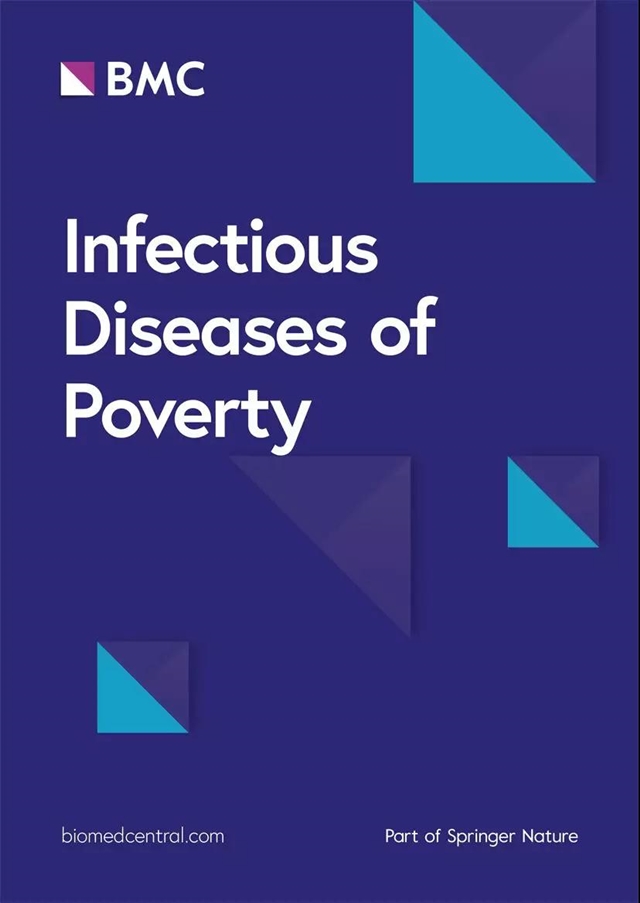利用非政府组织提供的二手数据,对马达加斯加南部肺结核患者营养支持计划的有效性进行横向分析
IF 5.5
1区 医学
Q1 INFECTIOUS DISEASES
引用次数: 0
摘要
结核病(TB)与营养不良之间存在着密切的双向联系:结核病通常会导致营养不良,而营养不良的人更有可能感染结核病,结果也会更糟。全球已有多个结核病营养支持计划,但有关其有效性的证据有限,且存在争议。本研究评估了 2022 年在马达加斯加 Atsimo-Andrefana 地区为结核病患者实施的营养支持计划的效果。在该计划中,营养不良的肺结核患者(体重指数 (BMI) 小于 18.5 kg/m2)在接受肺结核治疗期间每月可获得 0.6 升植物油和 6.0 千克大豆-小麦混合物。我们分析了 2022 年 1 月至 11 月期间在马达加斯加南部阿齐莫-安德里法纳地区收集的非政府组织二手数据,包括个人医疗状况(如结核病类型、治疗结果)以及治疗前、治疗期间和治疗结束后测量的营养状况(如身高、体重、中上臂围)等信息。我们对患者的基线特征和治疗结果进行了描述性分析,以评估所提供的营养支持对肺结核患者 BMI 的影响。研究共纳入了 1310 名结核病患者[9.9%(130 名)5 岁以下儿童、32.1%(420 名)5 至 18 岁儿童、58.0%(760 名)成人]。开始治疗时,55.4% 的 5 岁以下儿童、28.1% 的 5 至 18 岁儿童和 81.3% 的成人营养不良。42.3%(55/130)的 5 岁以下儿童在接受治疗时出现严重急性营养不良。虽然接受食物支持的成年肺结核患者的平均体重指数随时间推移有所增加,从 17.1 kg/m2(四分位数间距:15.8-18.3,范围:10.3-22.5)增至 17.9 kg/m2(四分位数间距:16.6-19.1,范围:11.9-24.1),但大多数成年人即使在完成肺结核治疗后仍然营养不良。目前的结核病营养支持计划不足以充分提高结核病患者的体重指数,从而克服营养不良问题。亟需修订肺结核患者的营养支持,尤其是针对 5 岁以下儿童的营养支持。本文章由计算机程序翻译,如有差异,请以英文原文为准。
A cross-sectional analysis of the effectiveness of a nutritional support programme for people with tuberculosis in Southern Madagascar using secondary data from a non-governmental organisation
There is a strong, bi-directional link between tuberculosis (TB) and undernutrition: TB often causes undernutrition, and undernourished people are more likely to contract TB and experience worse outcomes. Globally, several TB nutritional support programmes exist; however, evidence on their effectiveness is limited and contested. This study evaluates the effect of a nutritional support programme implemented for people with TB in the Atsimo-Andrefana region, Madagascar in 2022. Within this programme, undernourished people with TB [with a body mass index (BMI) of < 18.5 kg/m2] receive 0.6 L of vegetable oil and 6.0 kg of a soy-wheat blend per month throughout their TB treatment. We analysed secondary non-governmental organisation data collected between January and November 2022 in the Atsimo-Andrefana region, Southern Madagascar, including information on an individual’s medical conditions (e.g., type of TB, treatment outcomes) and nutritional status measured prior to, during, and after completion of treatment (e.g., height, weight, mid-upper arm circumference). We conducted descriptive analyses of patient baseline characteristics and outcomes to assess the impact of the provided nutritional support on the BMI of people with TB. A total of 1310 people with TB were included in the study [9.9% (130) children under the age of 5, 32.1% (420) children between 5 and 18 years, 58.0% (760) adults]. 55.4% of children under 5, 28.1% of children between ages 5 and 18, and 81.3% of adults were undernourished at treatment initiation. 42.3% (55/130) of children under 5 experienced severe acute malnutrition at treatment uptake. While the average BMI of adults with TB receiving food support increased over time, from 17.1 kg/m2 (interquartile range: 15.8–18.3, range: 10.3–22.5) to 17.9 kg/m2 (interquartile range: 16.6–19.1, range: 11.9–24.1), most adults remained undernourished even after completing TB treatment. The current TB nutritional support programme falls short of sufficiently increasing the BMI of people with TB to overcome malnutrition. There is an urgent need to revise the nutritional support available for people with TB, particularly for children under 5.
求助全文
通过发布文献求助,成功后即可免费获取论文全文。
去求助
来源期刊

Infectious Diseases of Poverty
Medicine-Public Health, Environmental and Occupational Health
CiteScore
16.70
自引率
1.20%
发文量
368
审稿时长
13 weeks
期刊介绍:
Infectious Diseases of Poverty is a peer-reviewed, open access journal that focuses on essential public health questions related to infectious diseases of poverty. It covers a wide range of topics and methods, including the biology of pathogens and vectors, diagnosis and detection, treatment and case management, epidemiology and modeling, zoonotic hosts and animal reservoirs, control strategies and implementation, new technologies, and their application.
The journal also explores the impact of transdisciplinary or multisectoral approaches on health systems, ecohealth, environmental management, and innovative technologies. It aims to provide a platform for the exchange of research and ideas that can contribute to the improvement of public health in resource-limited settings.
In summary, Infectious Diseases of Poverty aims to address the urgent challenges posed by infectious diseases in impoverished populations. By publishing high-quality research in various areas, the journal seeks to advance our understanding of these diseases and contribute to the development of effective strategies for prevention, diagnosis, and treatment.
 求助内容:
求助内容: 应助结果提醒方式:
应助结果提醒方式:


